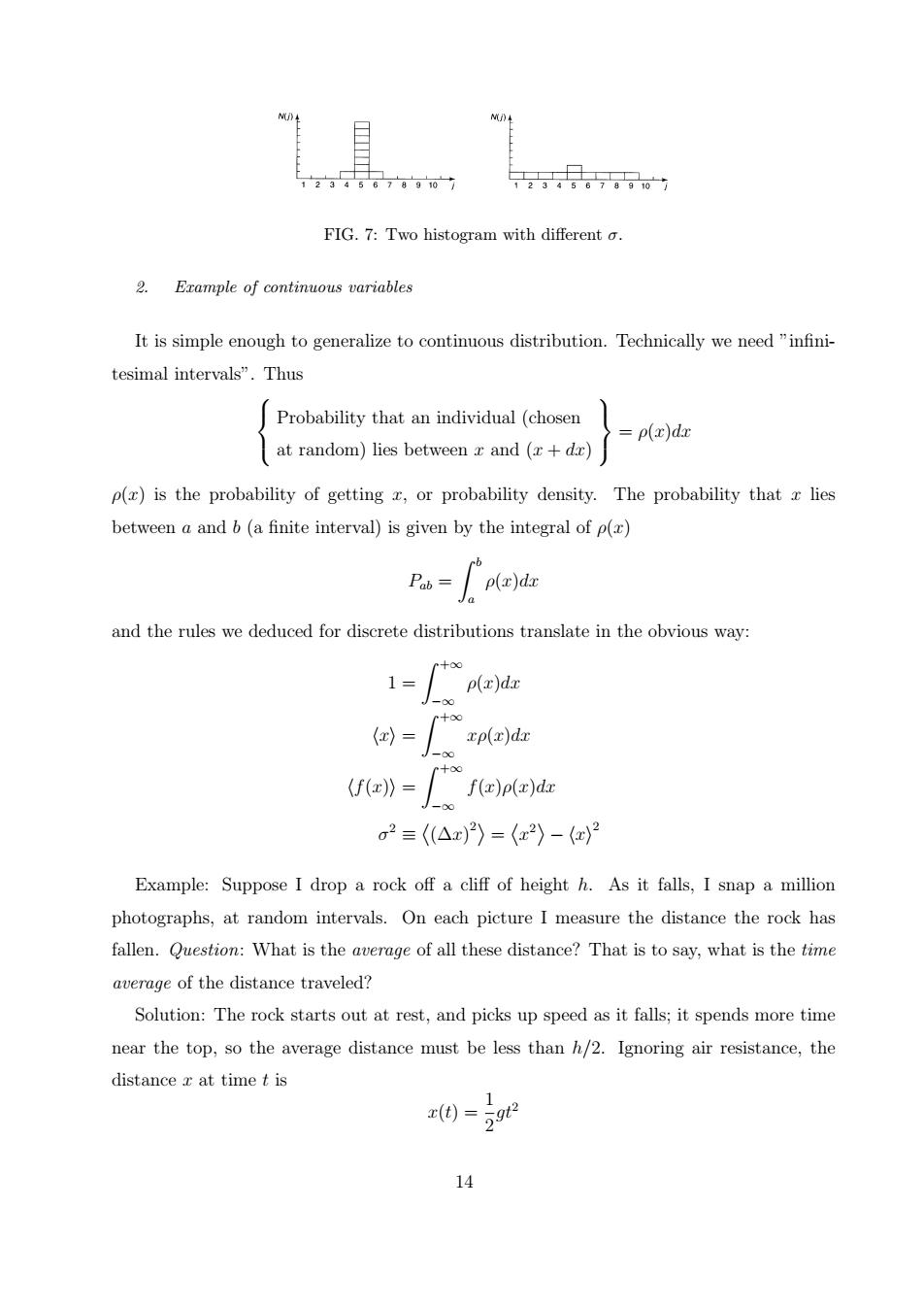正在加载图片...

六由。 。。 FIG.7:Two histogram with different o. 2.Erample of continuous variables It is simple enough to generalize to continuous distribution.Technically we need"infini- tesimal intervals".Thus Probability that an individual (chosen p(x)da at random)lies between r and (+dr) p(r)is the probability of getting r,or probability density.The probability that lies between a and b(a finite interval)is given by the integral of p() and the rules we deduced for discrete distributions translate in the obvious way: 1 = xp(r)dr n-ronoyke o2=(A)〉=(x2)-(2 Example:Suppose I drop a rock off a cliff of height h.As it falls,I snap a million photographs,at random intervals.On each picture I measure the distance the rock has fallen.Question:What is the average of all these distance?That is to say,what is the time average of the distance traveled? Solution:The rock starts out at rest,and picks up speed as it falls;it spends more time near the top,so the average distance must be less than h/2.Ignoring air resistance,the distancer at timet is () 14 FIG. 7: Two histogram with different σ. 2. Example of continuous variables It is simple enough to generalize to continuous distribution. Technically we need ”infinitesimal intervals”. Thus Probability that an individual (chosen at random) lies between x and (x + dx) = ρ(x)dx ρ(x) is the probability of getting x, or probability density. The probability that x lies between a and b (a finite interval) is given by the integral of ρ(x) Pab = Z b a ρ(x)dx and the rules we deduced for discrete distributions translate in the obvious way: 1 = Z +∞ −∞ ρ(x)dx hxi = Z +∞ −∞ xρ(x)dx hf(x)i = Z +∞ −∞ f(x)ρ(x)dx σ 2 ≡ (∆x) 2 ® = x 2 ® − hxi 2 Example: Suppose I drop a rock off a cliff of height h. As it falls, I snap a million photographs, at random intervals. On each picture I measure the distance the rock has fallen. Question: What is the average of all these distance? That is to say, what is the time average of the distance traveled? Solution: The rock starts out at rest, and picks up speed as it falls; it spends more time near the top, so the average distance must be less than h/2. Ignoring air resistance, the distance x at time t is x(t) = 1 2 gt2 14